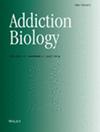Alexithymia, difficulty in recognising and naming emotions, is common among people who use alcohol. There is also emerging evidence that people with alexithymia are unable to distinguish emotions from non-emotional physiological states. The project aimed to test if alcohol use is related to the way student drinkers experience emotions and physiological states in the body.
We employed a novel method to study bodily sensations related to emotions and physiological states in the context of alcohol use: the emBODY tool, which allowed participants to mark areas of the body in which they experience various emotions and physiological states.
Students who showed a hazardous pattern of alcohol use (alcohol use disorders identification test [AUDIT] score ≥ 7, N = 91), overall, presented higher alexithymia levels and coloured larger areas for emotions and physiological states (showed less specificity) than those who show low-risk alcohol consumption (AUDIT ≤ 4, N = 90). Moreover, statistical classifiers distinguished feeling-specific maps less accurately for hazardous drinkers than low-risk drinkers [F(1,1998) = 441.16; p < 0.001], confirming that higher alcohol use is related to higher confusion of emotional and non-emotional bodily feelings.
Plausibly, this increased bodily confusion drives alcohol consumption: alcohol may serve as a means of dealing with undifferentiated changes in psychophysiological arousal accompanying emotional states.




